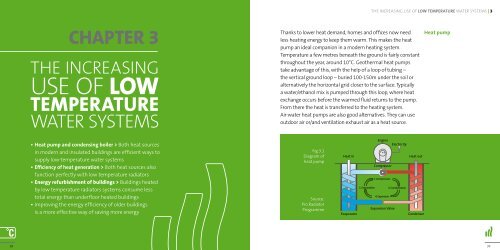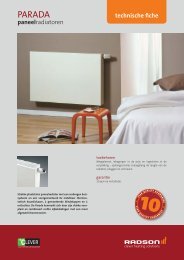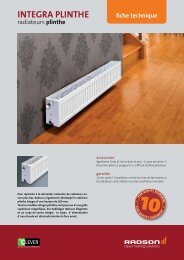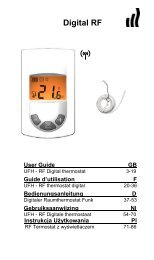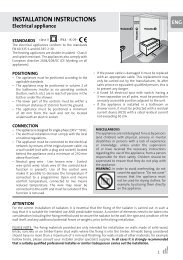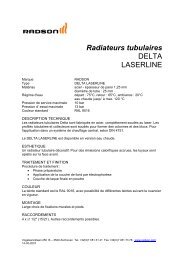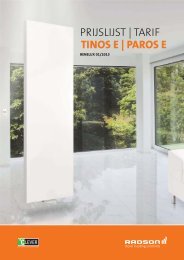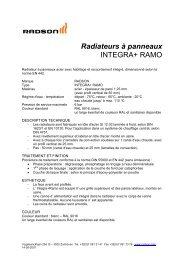Download - Purmo Radson
Download - Purmo Radson
Download - Purmo Radson
Create successful ePaper yourself
Turn your PDF publications into a flip-book with our unique Google optimized e-Paper software.
THE INCREASING USE OF LOW TEMPERATURE WATER SYSTEMS | 3<br />
chAPTER 3<br />
THE INCREASING<br />
USE OF LOW<br />
TEMPERATURE<br />
WATER SYSTEMS<br />
Thanks to lower heat demand, homes and offices now need<br />
less heating energy to keep them warm. This makes the heat<br />
pump an ideal companion in a modern heating system.<br />
Temperature a few metres beneath the ground is fairly constant<br />
throughout the year, around 10°C. Geothermal heat pumps<br />
take advantage of this, with the help of a loop of tubing –<br />
the vertical ground loop – buried 100-150m under the soil or<br />
alternatively the horizontal grid closer to the surface. Typically<br />
a water/ethanol mix is pumped through this loop, where heat<br />
exchange occurs before the warmed fluid returns to the pump.<br />
From there the heat is transferred to the heating system.<br />
Air-water heat pumps are also good alternatives. They can use<br />
outdoor air or/and ventilation exhaust air as a heat source.<br />
Heat pump<br />
• Heat pump and condensing boiler > Both heat sources<br />
in modern and insulated buildings are efficient ways to<br />
supply low-temperature water systems<br />
• Efficiency of heat generation > Both heat sources also<br />
function perfectly with low temperature radiators<br />
• Energy refurbishment of buildings > Buildings heated<br />
by low temperature radiators systems consume less<br />
total energy than underfloor heated buildings<br />
• Improving the energy efficiency of older buildings<br />
is a more effective way of saving more energy<br />
Fig.3.1<br />
Diagram of<br />
heat pump<br />
Source:<br />
Pro Radiator<br />
Programme<br />
Engine<br />
Electricity<br />
Heat in<br />
Heat out<br />
Compressor<br />
2. Compression<br />
1. Evaporation 3. Condensation<br />
4. Expansion<br />
Expansion Valve<br />
Evaporator<br />
Condenser<br />
38<br />
39


